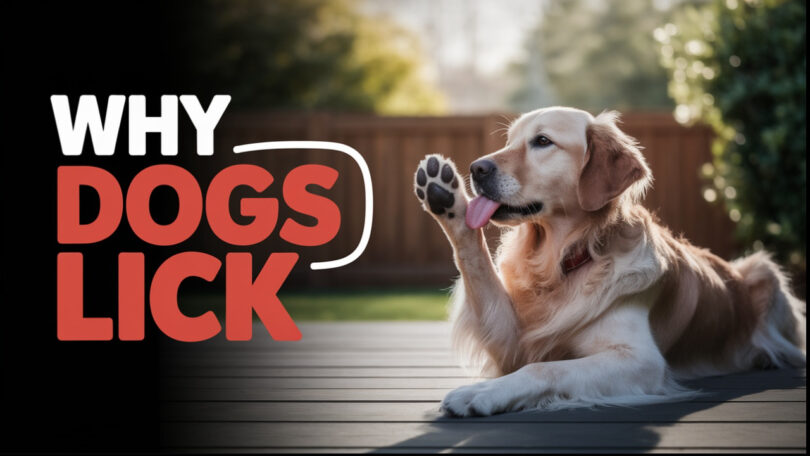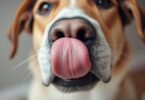Does your pup’s endless paw-chewing leave you wondering if it’s more than just boredom? Many pet parents overlook this behavior, assuming it’s harmless. But frequent licking often signals deeper issues—from allergies to hidden irritants—that demand attention.
While occasional grooming is normal, persistent nibbling can damage delicate skin or lead to infections. Veterinary experts agree: Identifying the root cause early helps prevent long-term discomfort. The good news? Gentle, natural solutions exist to soothe irritation without relying solely on medications.
This guide explores science-backed strategies to address paw health holistically. Discover how everyday pantry staples like coconut oil and oatmeal baths can calm inflamed skin. Learn preventive measures to protect sensitive paws during walks or playtime. Each remedy aligns with veterinary recommendations while prioritizing safety for curious pups.
Ready to give your companion lasting relief? Let’s uncover why paws become a target for over-grooming—and how simple adjustments at home can restore their comfort.
Understanding the Causes Behind Dog Paw Licking
Many pet owners notice their furry companions frequently licking their paws but may not realize the underlying reasons. This behavior often stems from two primary categories: physical irritants and psychological triggers. Recognizing these factors helps address the root issue rather than just managing symptoms.
Allergies and Environmental Irritants
Allergies rank among the top causes of persistent paw licking. Seasonal triggers like pollen or mold affect nearly 40% of dogs with skin sensitivities, according to veterinary studies. Food-related reactions can also manifest through itchy paws, especially with ingredients like chicken or wheat.
Environmental hazards play a role too. Chemicals from lawn treatments or road salts cling to paws, causing irritation. Grass seeds and burrs may lodge between toe pads, creating persistent discomfort. Watch for redness, swelling, or unusual odor—these signal possible infections requiring attention.
Stress Patterns and Hidden Triggers
Boredom and anxiety often drive repetitive licking as a coping mechanism. Dogs left alone for extended periods may develop this habit to self-soothe. Changes in routine or loud noises like thunderstorms can heighten stress levels.
Dry skin from low humidity or frequent baths worsens the cycle. Breeds with folds or long hair around their paws face higher risks. Early intervention prevents minor issues from escalating into open sores or bacterial infections.
Effective How to Stop Dog from Licking Paws Home Remedy Techniques
When mild irritation strikes, simple interventions can make a big difference. Start by gently cleaning affected areas with lukewarm water to remove surface allergens. A diluted apple cider vinegar rinse (1 part vinegar to 3 parts water) works well for occasional use—spritz it using a spray bottle after outdoor activities.
Appropriate Times for At-Home Care
Non-prescription approaches suit minor issues like seasonal dryness or temporary redness. If your companion responds positively within 3-5 days, continue monitoring. Track improvements using a journal—note changes in licking frequency or skin appearance.
Red Flags Requiring Professional Insight
Persistent swelling, open sores, or foul odors demand veterinary evaluation. Sudden behavioral changes paired with paw-chewing might indicate systemic issues. Never delay care if symptoms worsen despite consistent treatment attempts.
Natural solutions complement medical plans but aren’t cure-alls. Always consult your vet before combining therapies. With patience and observation, many pets find relief through tailored, layered support.
Apple Cider Vinegar and Its Antiseptic Benefits
For centuries, natural remedies have offered solutions to common pet ailments. Raw apple cider vinegar stands out for its dual-action properties—antiseptic and anti-inflammatory. Its acetic acid content combats yeast and bacteria while balancing skin pH levels. This makes it ideal for addressing mild irritation between toe pads or on paw pads.
Using an Apple Cider Vinegar Soak
Create a soothing soak by mixing equal parts raw, unfiltered apple cider and lukewarm water. Submerge the affected paw for 30-60 seconds daily. Pat dry afterward to prevent moisture buildup. Limit use to 5-7 days unless directed otherwise by a vet. Always avoid broken skin or raw areas.
Creating an On-the-Go Apple Cider Vinegar Spray
For quick post-walk care, blend one part cider vinegar with three parts water in a spray bottle. Mist lightly onto clean paws, focusing between toes. The diluted solution deters microbial growth without harsh chemicals. Store in a cool place and shake before each use.
Historical records show vinegar’s use in wound care dates back to ancient Greece. Modern pet owners value its accessibility and gentle effectiveness. Opt for organic, unfiltered varieties containing the “mother” for maximum benefits. Monitor your companion’s response, adjusting frequency as needed.
Soothing Relief with Coconut Oil and Chamomile Tea
Nature offers gentle solutions for irritated paws, and two household staples shine in this role. Coconut oil and chamomile tea work synergistically to address discomfort while supporting skin health. Both options are cost-effective and align with holistic care principles.
Topical and Dietary Uses of Coconut Oil
Rich in lauric acid, coconut oil provides antimicrobial protection when applied to paw pads. Warm a teaspoon of solid oil between your palms until it melts, then massage gently into clean skin. For dietary benefits, mix ¼ teaspoon per 10 pounds of body weight into meals daily.
This dual approach combats dryness internally and externally. Always choose unrefined, organic varieties to avoid additives. Start with small amounts to assess tolerance, gradually increasing if no digestive changes occur.
Chamomile Tea Soaks and Compresses for Inflammation
Steep two chamomile tea bags in 8 ounces of warm water for 5 minutes. Cool completely before use. Soak paws for 5-10 minutes, or apply cooled tea with a soft cloth as a compress.
The tea’s bisabolol compound reduces redness and swelling naturally. Repeat 2-3 times weekly during flare-ups. Always pat paws dry afterward and monitor for rare allergic reactions. Combined with coconut oil, these methods offer layered relief without harsh chemicals.
DIY Epsom Salt and Baking Soda Treatments
Epsom salt and baking soda might just be your pet's new best friends. These pantry staples offer science-backed solutions for tender paws while being gentle enough for regular use. Let’s explore safe preparation methods and their therapeutic benefits.
Detoxifying Foot Baths with Epsom Salt
Dissolve ½ cup Epsom salt in a gallon of warm water. Soak paws for 10 minutes to draw out impurities. The magnesium sulfate pulls toxins while reducing swelling—ideal for yeast-related discomfort.
This soak works best after walks to remove environmental triggers. Use 2-3 times weekly during flare-ups. Watch for softer paw pads and reduced redness as signs of progress.
Neutralizing Irritants with a Baking Soda Paste
Mix equal parts baking soda and water to create a thick paste. Apply between toes and let sit for 5 minutes before rinsing. This alkaline blend balances pH levels disrupted by chemicals or allergens.
Baking soda’s mild abrasive action lifts debris without causing irritation. Pair this treatment with weekly paw checks to spot issues early. Most pets show improvement within 3-4 applications.
Both remedies tackle common triggers like lawn chemicals and yeast overgrowth. Always pat paws dry thoroughly after treatments. Consistent care helps maintain comfort between vet visits.
Preventive Tips for Maintaining Healthy Dog Paws
Proactive care forms the foundation of lasting paw comfort. By integrating simple habits into daily routines, owners can address risks before they escalate. Consistency matters more than complexity—small, intentional actions yield significant results over time.
Paw Hygiene and Regular Maintenance
Post-walk paw care prevents irritant buildup. Use a damp cloth to gently wipe between toes and pads, removing allergens or debris. Always dry thoroughly to discourage bacterial growth in moist crevices.
Monthly nail trims maintain proper foot alignment. Overgrown nails alter gait, increasing joint stress. Check for cracked claws or inflamed skin during grooming sessions—early detection simplifies treatment.
Diet, Hydration, and Environmental Considerations
Omega-3 supplements support skin resilience from within. Consult your veterinarian about adding fish oil or flaxseed to meals. Fresh water access keeps paw pads hydrated, reducing cracking risks.
Modify outdoor routes during high-pollen seasons. Rinse paws after contact with salted sidewalks or treated lawns. Indoor humidity levels above 30% prevent excessive dryness during winter months.
Create a daily care checklist: inspect for foreign objects, apply protective balms before walks, and monitor hydration. Persistent redness or odor warrants professional evaluation. Partnering with your vet ensures tailored strategies for long-term paw health.
Wrapping Up Your Dog’s Paw Health Journey
Caring for your companion’s paws requires both knowledge and consistent action. Allergies, environmental irritants, and stress patterns often drive excessive grooming behaviors. Natural solutions like coconut oil applications and apple cider vinegar rinses address these challenges while supporting skin resilience.
Chamomile compresses soothe inflammation, while Epsom salt baths neutralize irritants. Baking soda paste offers quick relief between treatments. These methods work best when paired with preventive care—regular paw inspections, nutrient-rich diets, and clean outdoor pathways.
Progress often appears gradually. Track changes in grooming habits over 2-3 weeks. Persistent symptoms like redness or odor signal it’s time to consult your veterinarian. Early intervention prevents minor concerns from becoming chronic issues.
Every wagging tail deserves comfort. By blending science-backed remedies with attentive care, you empower your furry friend’s wellbeing. Stay observant, stay consistent, and celebrate small victories along their path to healthier paws.










Leave a Comment